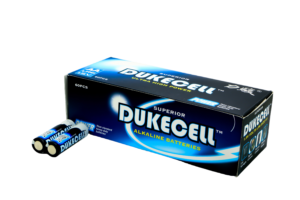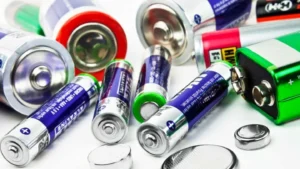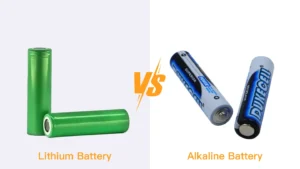Lithium batteries and lithium-ion (Li-ion) batteries power everything around us, from smartphones to electric vehicles, and are ubiquitous in our lives. But what happens when these high-energy-density lithium batteries reach the end of their useful life? Most people are not aware that if not handled properly, they can pose serious risks. Now, please follow the guidance of Dukecell battery experts to understand the entire process of lithium batteries from use to final disposal, and how to transform these powerful energy units into sustainable resources through scientific methods.
What is a lithium battery?
Lithium batteries (lithium-ion batteries) are a type of secondary battery (rechargeable battery) that can store more energy in a smaller space compared to traditional batteries. They are lighter and more compact than other batteries. They are commonly found in electric scooters, electric bicycles, and e-cigarettes, powering most household rechargeable devices such as mobile phones, laptops, power tools, and vacuum cleaners. They come in various shapes, including round (like traditional AA batteries), flat, or like small bricks. They are usually marked with “lithium-ion,” “Li-ion,” “li-po,” “lithium-polymer,” or “Li+.
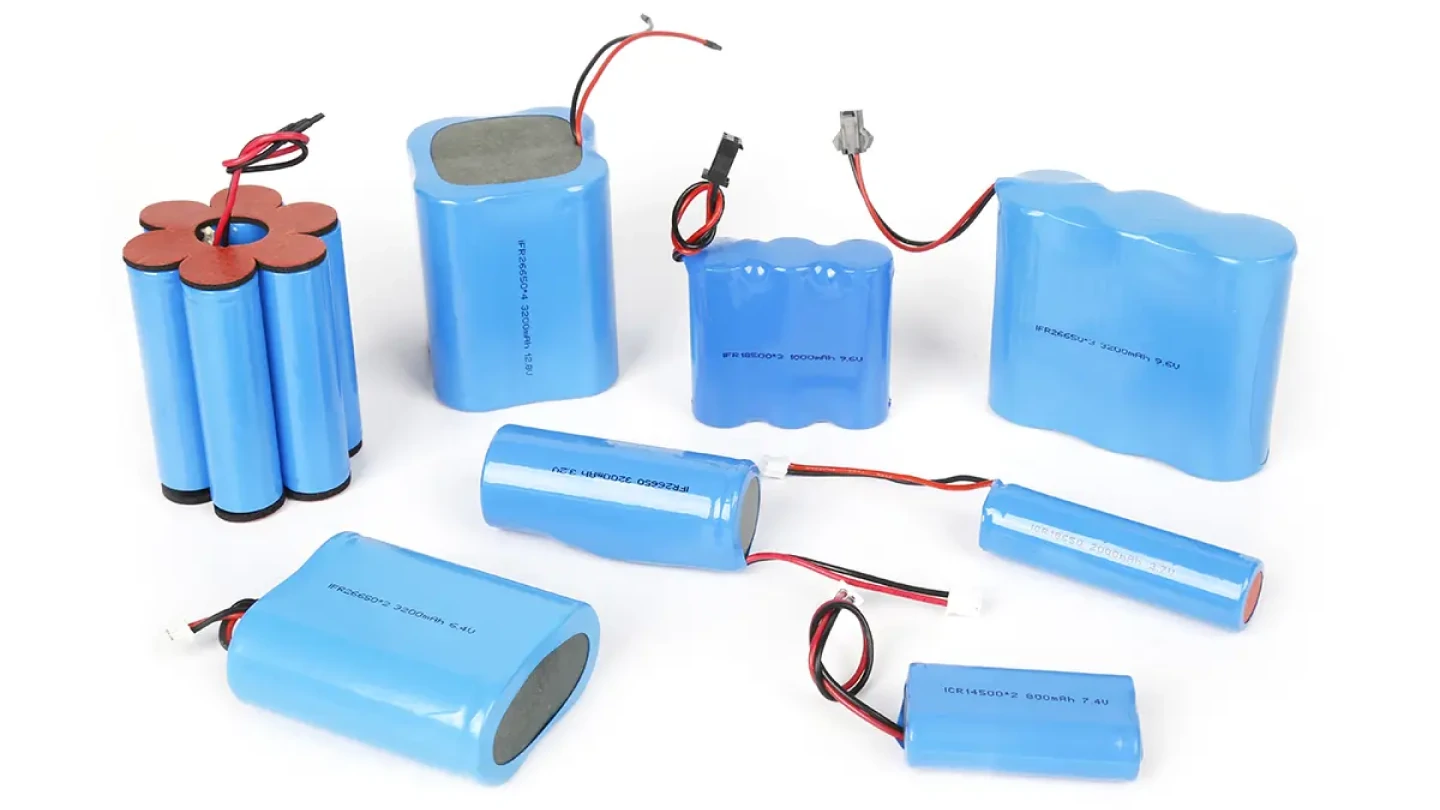
What are the risks of lithium batteries?
Rechargeable lithium batteries, while bringing convenience to modern life, also carry certain risks. The fire behavior of lithium-ion batteries is more unstable than that of traditional batteries. If the battery is damaged, malfunctions, or is charged improperly, a phenomenon known as “thermal runaway” can occur. Simply put, the lithium battery will continue to heat up, eventually leading to combustion. This means that the chemical substances inside the battery become increasingly hot and cannot be cooled down. When the temperature reaches the ignition point of lithium metal, the battery can spontaneously ignite, explode, release toxic and flammable vapors, and even reignite after the fire appears to have been extinguished.
What factors can increase the risk of lithium battery fires?
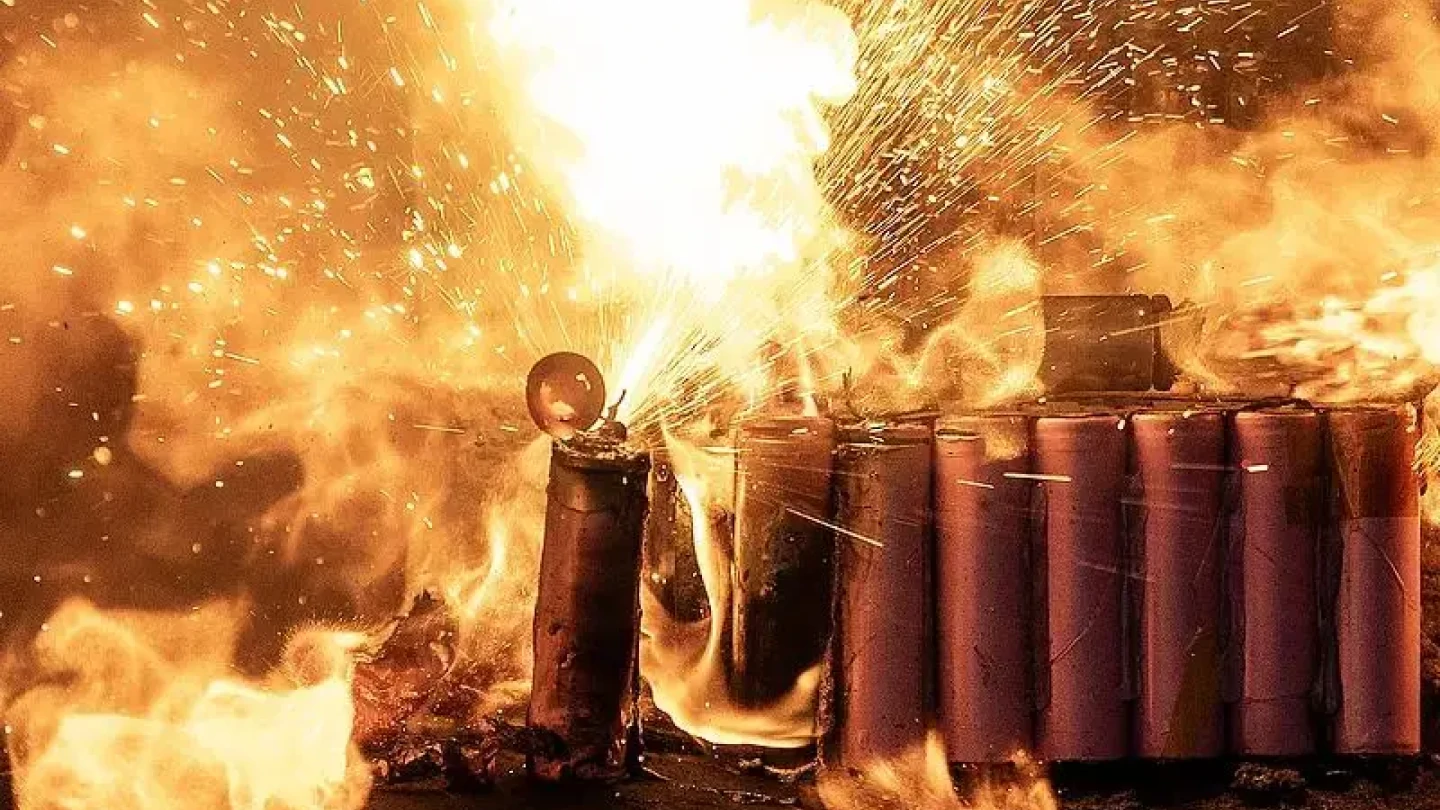
The factors that increase the risk of lithium battery fires mainly include the following points:
1. Overcharging and Overdischarging: Lithium batteries are prone to damage to the charging protection module when charged at excessively high voltages or currents, leading to a loss of protective function. Under the influence of excessive current, the heating effect due to the battery’s internal resistance can cause the temperature to reach a critical value, after which the battery can combust. Therefore, it is extremely important to use reliable battery management circuits and to ensure uniform internal resistance in each battery. The same principle applies to fires caused by discharging.
2. Short Circuits: When the positive and negative poles of a lithium battery come into contact with each other or with external conductors, it can lead to internal short circuits, potentially causing fires.
3. High-Temperature Environments: Lithium batteries are prone to spontaneous combustion in high-temperature environments, such as prolonged exposure to sunlight or excessively high working temperatures.
4. Mechanical Damage: Once the casing of a lithium battery is scratched, punctured, or subjected to compression or other mechanical damages, this can cause internal structural damage, leading to internal short circuits and fires.
5. Manufacturing Defects: One of the causes of lithium-ion battery fires is manufacturing defects, such as impurities in the battery materials or inconsistencies during assembly. These defects can compromise the integrity of the battery, increasing the likelihood of malfunctions and fires. Impurities in the battery materials can slowly participate in the battery’s electrochemical reactions, forming a “galvanic cell” effect, damaging the internal structure, causing internal short circuits, and leading to fires.
Inconsistencies refer to variations in battery capacity or internal resistance;
(1) inconsistent capacity can cause the battery with lower capacity to overcharge and overdischarge, leading to fires;
(2) high internal resistance can generate higher temperatures during charging and discharging compared to surrounding batteries, leading to fires.
6. Improper Charging: Inappropriate charging methods, such as overcharging, fast charging, or using incompatible chargers, can lead to excessive heat buildup within the battery, triggering a thermal runaway reaction.
Here we elaborate on this:
(1) The process of lithium battery charging: To ensure the lifespan of lithium batteries, charging equipment first charges at a low power to test whether the lithium battery has the ability to charge; then it gradually adjusts to the maximum charging power the charger can achieve; when the battery is almost full, it gradually reduces the charging power; finally, it uses a “trickle” charging method to fully charge the battery. This process is similar to the charging process of new energy lithium electric vehicles.
(2) Overcharging: Refers to the situation where the battery is already full, but the charger continues to charge. Generally, the battery protection circuit (referring to lithium battery packs) will actively cut off the circuit when it detects that the battery is full, to protect the battery. However, many lithium batteries without protection circuits are not so fortunate. For example: individual 18650 batteries without battery protection devices.
(3) Fast Charging: Refers to the reduction of charging time. To achieve this, we must increase the charging voltage or increase the charging current. In this case, once it exceeds the lithium battery’s tolerance, it may cause a fire;
(4) Incompatible Chargers: For example, the standard charging parameters for an individual 18650 battery are 5V 1A, but using a 12V 3A charger to charge the lithium battery can very likely cause a fire.
7. Physical Damage: Physical damage to lithium batteries, whether due to impact, puncture, or compression, can compromise their structural integrity and cause internal short circuits, potentially leading to thermal runaway and fires.
8. Battery Management System (BMS) Failure: The BMS is responsible for monitoring the battery status in real-time and managing the charging and discharging processes. If the BMS is not properly maintained, it can lead to fires. The BMS, which monitors the charging and discharging status of the battery, is an essential component of lithium battery packs.
9. Electrical Malfunctions: Electrical malfunctions are a major cause of fires in lithium battery energy storage stations, where unexpected high currents or voltages may invade the station and cause fires.
Understanding these risk factors helps to take appropriate preventive measures to ensure the safe use of lithium batteries.
How to dispose of lithium batteries?
Disposal of Damaged Batteries
When disposing of damaged lithium batteries, it is essential to take cautious and professional measures to ensure safety and environmental protection. Damaged lithium batteries may pose risks of leakage, overheating, or fire, so they should be immediately identified and isolated to avoid being treated with regular waste.
When disposing of damaged lithium batteries, follow these steps and precautions:
1. Contact Local Authorities: Please urgently contact your local government to inquire about how to handle these batteries in your area. Different regions may have different regulations and designated recycling points.
2. Identify Damaged Batteries: Any lithium-ion battery showing signs of damage should be considered damaged and potentially hazardous, especially if there is water or liquid inside the battery. Deformation and swelling in the battery’s appearance are important signals.
3. Avoid Mixing with Regular Waste: Never dispose of damaged lithium-ion batteries or devices in regular household, recycling, public, or industrial waste bins, as damaged lithium-ion batteries can cause fires.
4. Avoid Piling Up: Do not accumulate discarded, damaged lithium-ion batteries or devices together.
5. Personal Protection: When handling damaged batteries or devices, wear gloves and protective clothing and equipment to reduce the risk of electric shock, secondary fires, and contact with toxic, corrosive, and flammable vapors and substances.
6. Safe Storage: Batteries damaged by fire or smoke should be stored in a well-ventilated outdoor area, at least 10 meters away from any other combustible or flammable hazards.
7. Handling Leaking Batteries: Place leaking or damaged batteries in a clear plastic bag or container and keep them away from buildings, pending disposal.
8. Handling Damaged Lithium Batteries: If safe to do so, damaged lithium-ion batteries can be discharged before disposal by placing the battery in a large metal container filled with sand or fire blankets, which are fire-resistant materials that wrap the lithium battery. Leave it for more than 48 hours in a well-ventilated outdoor location. Finally, have it handled by professionals.
9. Professional Assistance: If you notice a strong odor, visible corrosion, smoke, or heat from battery-powered devices, or abnormal behavior, it is crucial to seek professional help. If you are unsure how to effectively handle the situation, safety must be prioritized, and assistance should be sought.
Following these steps and precautions can help you dispose of damaged lithium batteries safely, reducing risks to the environment and personal safety.
Disposal of Undamaged Batteries
When disposing of undamaged lithium batteries, it is important to follow principles of environmental protection and safety. Here are some recommended methods:
1. Retailer Recycling Programs: Take undamaged lithium batteries to dedicated recycling sites or centers for processing. Many places have lithium battery recycling bins or drop-off points, such as large electronics retailers like Best Buy, where people can dispose of used batteries.
2. Sorting for Recycling: Sort lithium batteries for recycling based on their types. Different types of lithium batteries may contain different chemical substances, so they should be sorted according to their types for proper treatment and recycling.
3. Community Recycling Events and Facilities: Some communities organize regular battery recycling events where residents can bring undamaged lithium batteries to designated locations for recycling. Additionally, some communities have set up long-term battery recycling facilities, similar to street-side recycling stations. These facilities will properly store the collected lithium batteries, waiting for professional recycling companies to handle them collectively.
4. Pre-treatment: When recycling and processing lithium batteries, safety measures must be taken to prevent damage or leakage of harmful substances. Use specialized tools and equipment for handling and ensure that the workplace is well-ventilated to prevent the spread and pollution of harmful substances.
Precautions:
Do not dispose of lithium-ion batteries or devices in regular household trash or recycling bins. Do not dispose of lithium-ion batteries or devices in industrial waste bins. Please do not accumulate discarded lithium-ion batteries or devices. Before sending the batteries to a processing or recycling facility, tape the battery terminals with electrical tape.
How to Dispose of Laptop Batteries?
When disposing of laptop batteries, follow these steps and suggestions:
1. Check if the battery is recyclable: Most laptop batteries can be recycled, but some special types of batteries may require special treatment. You can check the label on the battery or the manufacturer’s guide to determine if it can be recycled.
2. Safely remove the battery: If your laptop battery is recyclable, remove it from the laptop. Depending on your laptop model, you may need to use specific tools or press a release button to remove the battery.
3. Store properly: Once the battery is removed, place it in a dry, cool area, away from fire sources or flammable items.
4. Hand over to professional recycling facilities: You can take the battery to a local electronic waste recycling center or drop-off point. Many cities have dedicated recycling spots for dealing with used batteries. You can consult your local government or waste management center for more information.
5. Contact the manufacturer or retailer: If you cannot find a suitable recycling point, you can also contact the electronic product manufacturer or local electronics retailer to inquire if they offer battery recycling services or suggestions.
6. Avoid improper disposal: Please do not discard laptop batteries in regular trash bins, nor should you throw them into fire or physically destroy them. Such practices can harm the environment and human health.
7. Environmental awareness: Properly handling batteries is part of our collective responsibility to the environment. Laptop batteries are considered hazardous waste and should not be discarded carelessly; they require proper disposal.
By following these steps, you can ensure that laptop batteries are disposed of safely and in an environmentally friendly manner.
How to Dispose of Lithium Coin Batteries?
When disposing of lithium coin batteries personally, follow these steps and methods:
1. Avoid Regular Trash Cans: Lithium-ion batteries should not be thrown into regular trash or recycling bins, as they may catch fire during transportation, posing a risk to landfills or recycling facilities.
2. Choose the Right Recycling Point: Take lithium-ion batteries to designated recycling points or household hazardous waste drop-off locations. This ensures safe disposal and minimizes environmental impact.
3. Understand Disposal Methods: Lithium batteries can be processed through recycling, incineration, landfilling, or deep well injection, but each region’s government has different methods for disposing of lithium batteries. Please refer to your national government’s disposal advice. Recycling is the most common and environmentally friendly method, involving disassembly to extract valuable metals.
4. Utilize Professional Recycling Services: Visit professional recyclers, retailers that offer recycling services, or check local waste programs. Use resources like Earth 911 or Call2Recycle to find nearby recyclers.
5. Follow Local Regulations: Different areas may have different regulations and designated recycling points. Please urgently contact your local government to inquire about how to handle these batteries in your area.
6. Personal Safety: When handling batteries, wear appropriate personal protective equipment, such as gloves, to prevent chemical burns or corrosion.
Lithium-ion Battery Safe Disposal Guidelines
Due to varying disposal guidelines from different authorities and depending on the type and quantity of batteries, it is crucial to contact your local council’s waste management department first to check if you can bring lithium-ion batteries to their facility.
Some councils allow certain lithium-ion batteries to be placed in dedicated areas at the waste disposal site, while others prohibit this entirely due to the risk of battery fires.
Please remember: If your government department still permits the processing or recycling of lithium-ion batteries at their center, be sure to notify the staff upon arrival so that you can place the batteries in the correct location.
Recycling Batteries
Recycling batteries offers benefits to both businesses and the environment. You can recycle lithium-ion batteries through B-cycle or other battery recycling centers in your area. However, only certain types of batteries are accepted—and they must be undamaged.
Why Recycle Lithium-ion Batteries?
Lithium-ion batteries contain valuable materials such as lithium, cobalt, and nickel, which can be recovered and reused. Moreover, recycling helps prevent toxic chemicals from polluting our environment. It’s all about reducing the demand for raw materials and keeping harmful substances out of our ecosystem.
Where Can I Dispose of Lithium-ion Batteries?
If your lithium-ion batteries are undamaged, you can recycle them through several methods:
Battery Recycling Collection Bins: If there are battery recycling collection bins in your area, you can directly place the batteries in these bins for recycling.
Retailer Recycling: Some large retailers such as Best Buy and Staples typically have battery recycling bins where you can hand over your batteries for recycling.
U.S. Environmental Protection Agency (EPA): You can contact the EPA for more information and guidance on lithium battery recycling.
Mobile Collection Services: Certain areas may offer mobile collection services where you can hand over your batteries to specialized recycling teams during their service periods.
Planet Ark: Planet Ark is an organization dedicated to electronic waste recycling. You can look up if there are any related recycling events or service points.
Australian Battery Recyclers Initiative (ABRI): If you are in Australia, you can find commercial battery recyclers through ABRI or household battery recycling points through B-Cycle.
Remember, when recycling lithium batteries, follow local regulations and guidelines to ensure proper disposal. Regulations may vary across different states and territories, so the best practice is to contact your local waste management service or the organizations mentioned above for specific recycling guidance and assistance.
How to Recycle Lithium-ion Batteries?
How to Recycle Lithium-ion Batteries?
1. Locate Recycling Centers:
Lithium-ion batteries require special handling, so finding a qualified facility is crucial.
Here’s how to find a facility:
– Use Recycling Directories: You can use green directories to find recycling centers near you that are equipped to handle lithium-ion batteries. These centers have professional staff and the right equipment to safely recycle damaged or end-of-life batteries.
– Retail Recycling Programs: Some electronics stores and large retailers offer battery recycling bins. These bins are usually free of charge and provide a convenient way for you to dispose of old batteries.
– Manufacturer Recycling Programs: Check if your device’s manufacturer offers battery recycling services. Many companies now have their own recycling programs.
2. Proper Packaging:
When preparing to recycle your lithium-ion batteries, ensure they are packaged correctly to prevent any potential hazards during transportation. Use a sturdy container and separate batteries to avoid short-circuiting.
3. Follow Local Regulations:
Ensure you are aware of and follow local regulations regarding the recycling of lithium-ion batteries. Different regions may have specific rules about how and where to recycle these batteries.
4. Contact the Recycling Center:
Before you take or send your batteries for recycling, contact the recycling center to confirm their acceptance policies and any specific procedures they may have for lithium-ion batteries.
5. Responsible Disposal:
Dispose of your lithium-ion batteries responsibly by using the services mentioned above. This not only ensures that the batteries are recycled in an environmentally friendly manner but also helps in the conservation of valuable materials and the prevention of potential environmental contamination.
Practical Tips for Discarding Batteries in E-Waste Bins
Proper preparation helps ensure that your batteries can be safely transported and recycled:
Tape the terminals: To prevent short circuits, it’s best to tape over the battery terminals before handling the batteries.
Don’t mix battery types: When dealing with lithium-ion batteries, keep them separate from other types of batteries.
Avoid damage: Ensure that the batteries are not damaged or swollen before taking them to the collection point.
By following these simple steps and utilizing available recycling programs, you can contribute to a more sustainable future. Remember, every battery recycled is a step towards a cleaner, greener Earth, aligning with our vision of being a channel that impacts sustainable development and society.
Battery Recycling Process
Once your batteries arrive at the recycling facility, the following occurs:
Dismantling: Professional recyclers dismantle the batteries into individual components. This often involves shredding the batteries to separate the materials.
Material Separation: Different materials, such as metals and plastics, are separated using methods like hydrometallurgy, pyrometallurgy, or mechanical processes.
Recycling and Reuse: Recovered materials like cobalt, lithium, and nickel can be reused to manufacture new batteries or for other industrial applications.
When recycling batteries, always ensure compliance with local environmental regulations. This helps ensure that materials are handled responsibly and that no harmful substances end up in landfills.
Precautions When Recycling Lithium-ion Batteries
Do’s:
– Remove the battery from the device whenever possible.
– Store physically damaged batteries in an insulated plastic bag to avoid short circuits.
– Keep them in a cool, dry place to prevent combustion.
– Take them to certified recycling facilities that can safely handle the hazardous materials they may contain.
– Contact the manufacturer to inquire about any industry collection programs that may be suitable for them.
Don’ts:
– Never throw used batteries into regular trash.
– Do not squeeze or puncture the batteries, as this can lead to leakage or short circuits.
– Do not store large quantities of lithium-ion batteries together, and do not leave exposed connectors uncovered or untaped.
– Never dispose of lithium-ion batteries in regular blue recycling bins.
– Do not place old batteries near flammable materials.
How to Determine If Your Lithium-ion Battery is Faulty?
Identifying faulty or damaged lithium-ion (Li-ion) batteries is crucial for safety and device performance. Here are signs and tests guided by Dukecell battery experts that can help you determine the health of your lithium-ion battery:
1. Visual Inspection
A battery that is swollen or has a bloated casing is a clear sign of damage. Swelling can be caused by gas buildup due to overcharging, deep discharging, or internal short circuits. Any discoloration or warping of the battery casing may indicate overheating, which is a serious issue.
2. Decreased Battery Performance
If the battery drains faster than before, this is usually a sign of decreased battery performance. After a certain number of charge and discharge cycles, lithium-ion batteries typically only retain a portion of their original capacity. High temperatures can accelerate the decline in battery performance.
3. Voltage Test
A simple voltage test with a multimeter can determine if the battery is still working or if it needs to be replaced. Most lithium-ion batteries have a voltage of up to 4.2 volts when fully charged. If your lithium battery’s voltage drops below 3.4 volts after being left for an hour on a full charge, the battery’s lifespan is nearing its end. If the voltage drops below 3.0 volts, the battery may be damaged and should be recycled.
4. Overheating During Charging or Use
A battery that overheats during charging or normal use is a potential safety hazard. Overheating may indicate that the internal resistance of the battery has increased, and the current passing through this resistance generates heat. Abnormal charging temperatures usually suggest that it is time to consider replacing the battery. The acceptable operating temperature range for most lithium-ion batteries is 59°F to 95°F. Any temperature outside this range, especially when the battery becomes too hot to touch, is a warning signal that the battery must be replaced.
5. Leakage or Odd Smells
A battery that leaks or emits a chemical odor indicates that the internal structure of the battery is compromised, which can be very dangerous. A leaking battery may release toxic chemicals, posing a threat to health and should be handled with care. Warning, the internal materials of a lithium battery should never come into direct contact with air, as this will inevitably lead to the battery combusting.
Frequently Asked Questions
1. Can lithium batteries be thrown away?
No, lithium batteries should not be discarded carelessly. They contain valuable metals (such as lithium, cobalt, nickel, etc.) as well as some harmful substances. If not handled properly, they can pollute the environment and waste recyclable resources.
2. How harmful are lithium-ion batteries to the environment?
Lithium-ion batteries are not necessarily harmful to the environment; it is the metals contained in certain types of lithium batteries, especially cobalt, that can be harmful. If not recycled properly, metals like cobalt and nickel can leach into the ground, causing groundwater contamination. Of course, even harmless metals can be considered pollution if they are concentrated in a particular area, leading to an excess of certain metal content.
3. What happens to lithium-ion batteries after they are scrapped?
They can self-ignite and pollute.
4. How long is the lifespan of lithium-ion batteries?
Lithium-ion batteries typically last for about three years or 300 to 500 charge cycles before they reach a stage where they can no longer retain much energy. High-quality lithium batteries have a higher number of cycles. For example, new energy vehicle batteries usually have a cycle life of over 2000 cycles. If you charge every two days, theoretically, they can last about three years. If you use your battery within a 20%-80% capacity range, your battery could last for 5000 cycles, which is over 10 years.
5. How to determine if a laptop battery needs to be replaced?
If you notice that your laptop’s battery life significantly decreases when not connected to a power adapter, originally lasting for several hours but now only supporting a few tens of minutes or less, this could be a sign of a significant decrease in battery capacity. Additionally, if the battery charging speed becomes abnormally slow, or if the battery often becomes overheated during the charging process, or if the battery appears swollen or deformed, these all indicate that the battery may have malfunctioned or its performance has severely degraded, and it’s time to consider replacing the battery.
6. What are the benefits of recycling lithium batteries?
From a resource perspective, recycling can recover precious metal resources such as lithium, cobalt, and nickel, reducing the need for mining of virgin ores. Environmentally, it prevents pollution from harmful substances in discarded lithium batteries, protecting soil, water bodies, and air, which are key ecological elements. Recycling lithium batteries can also drive the development of related recycling industries, create job opportunities, and promote the green transformation of economic development.
7. Where can I find professional lithium battery recycling facilities?
Many electronics manufacturers have their own official recycling channels. You can visit their official websites to find nearby recycling points or ways to mail in your batteries for recycling.
Conclusion
Conclusion
Lithium-ion batteries are incredibly useful, but it is crucial to avoid inadvertently putting yourself or others at risk without knowledge of the potential dangers. The associated fire hazards and toxic metals contained within these batteries can lead to serious problems if they are not properly recycled. If you wish to recycle lithium-ion batteries, you can look up battery recycling drop-off centers near you. We appreciate your contribution to the environment!
